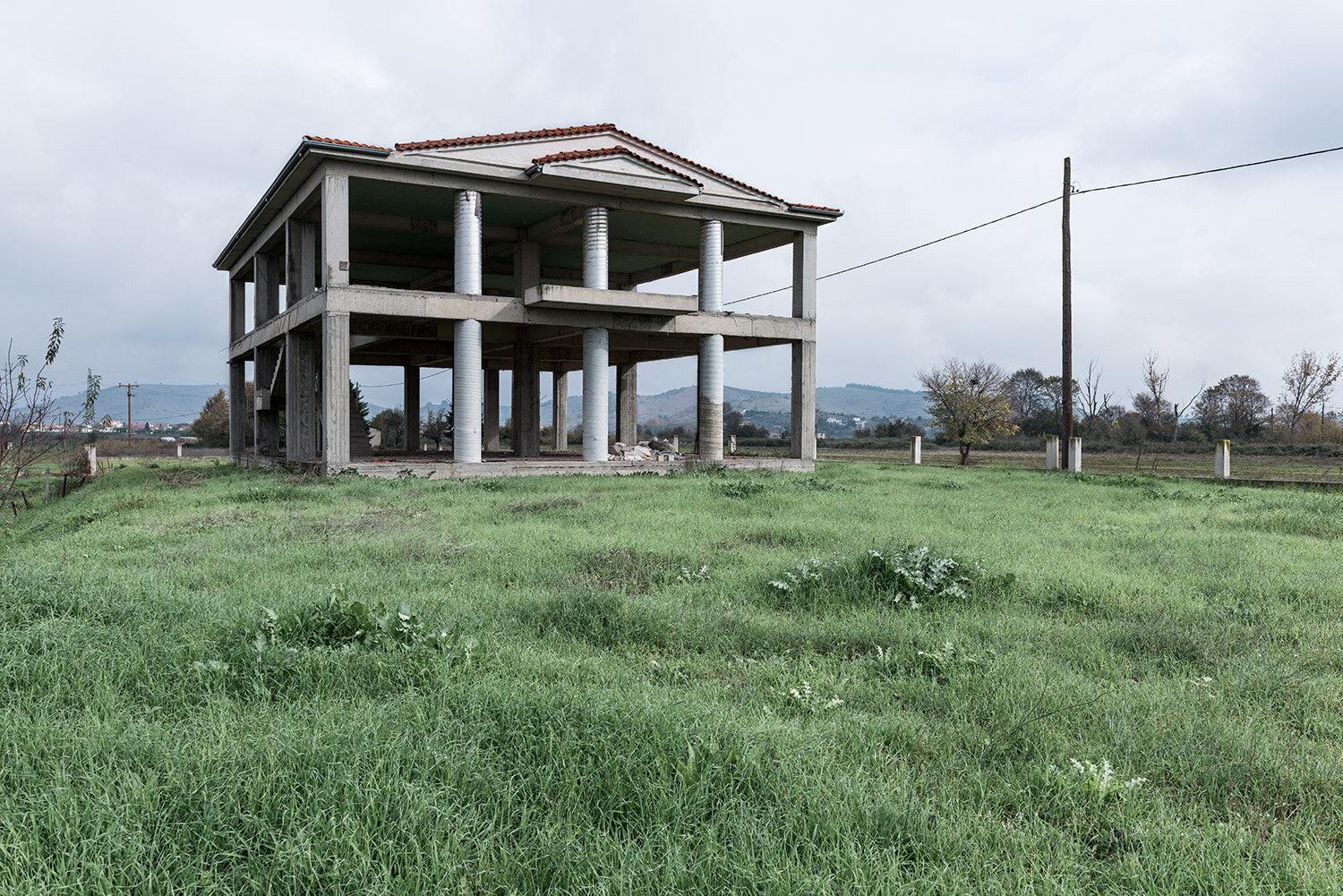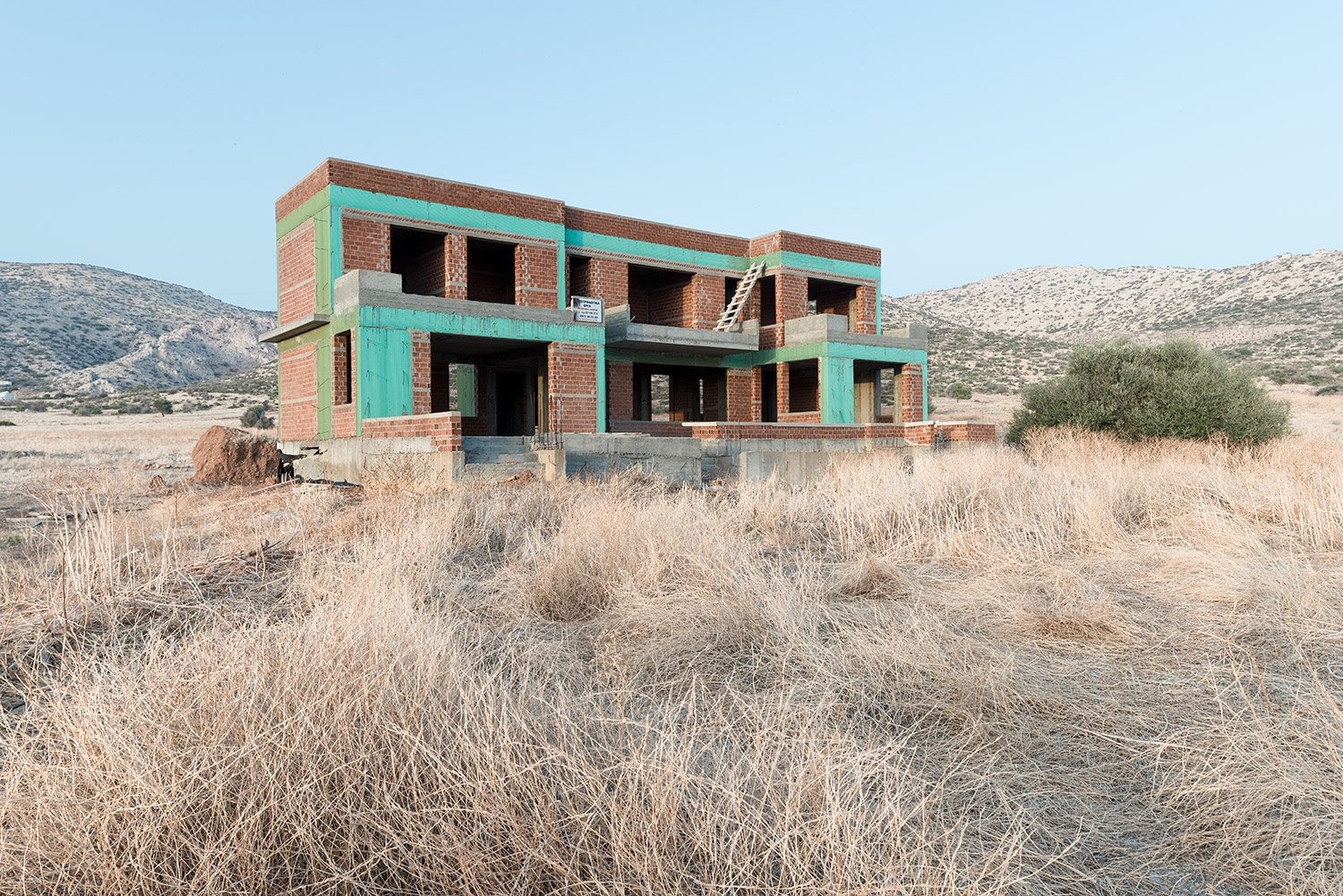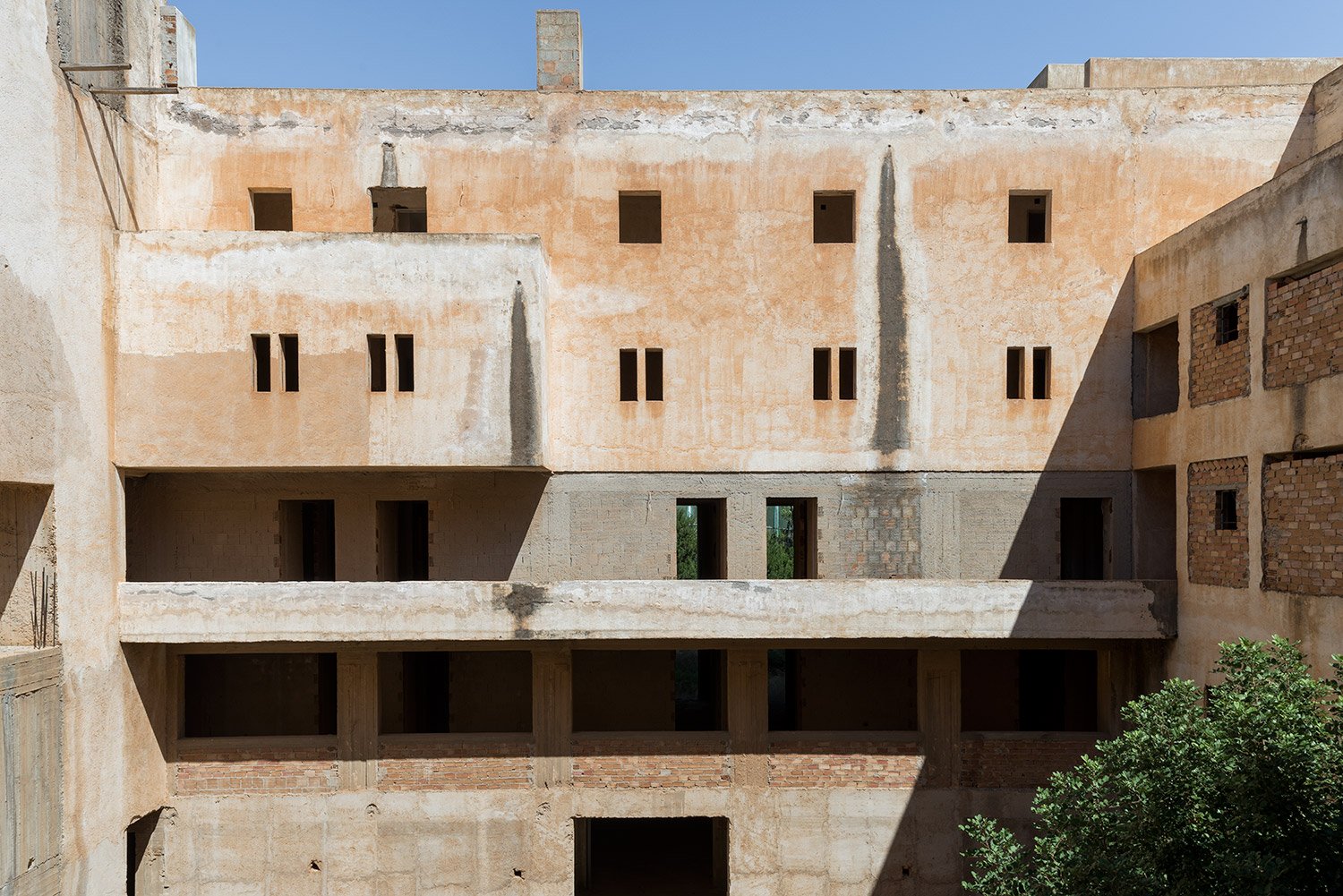Un-Finished // Contemporary Ruins
In Greece’s countryside lay abandoned, imposing architectural frameworks dotting desolate tracts of land. Most are unused new constructions secluded from adjacent neighborhoods, importing into question their original purpose. Greeks aspire to disconnect from the “concrete jungle” of urban life, but for many, failure in completion was imminent. Many of these unrealized structures were begun before the recent debt crisis and abandoned for decades as a result of feuds, financial hardship, or mismanagement. Some are partially-completed and lived-in, left unregistered to evade taxation, while upper levels remained unfinished.
In conversation with architects and civil engineers, I learned the Greek state requires builders complete concrete frameworks, aptly named “super-structures”, within four years. Once this mandate is met, permission to continue building is granted in perpetuity. Incomplete buildings incur no property tax bills. Along with a Greek ethos of familial obligation and creative impulse, decades of lenient regulation, endemic corruption, and government cronyism bolstered this etiquette. Greece’s now-dire economy has caused a mass exodus of citizens seeking opportunity in other European nations.
What hit home for me was Greek friends’ and relatives’ hopes of acquiring property or building homes have been largely shattered. They unanimously believe an entire generation has been de-assetized and stripped of opportunity. In tandem to with a fascination of their improbable forms and haunting isolation—a palpable melancholic allusion to faded human presence—I grew intrigued by their lack of architectural homogeneity. Evoking ambitions epitomized in the American dream, these unadorned skeletons stand in disuse, now empty vessels of aborted hope and inchoate nostalgia. Resembling modern-day ruins of stalled progress, they serve as cogent beacons of failed governance and monetary policy.
While these abandoned structures are located in isolated environments, I have grown interested in the perception of home and its individual expression via architecture, the seeming contradictions between intention and actual use of space. In a country renowned for its rich culture and beautiful destinations, I sought to investigate this curious architectural decadence. How does Greece’s society and prevailing political and economic landscapes contribute to this longstanding cultural phenomenon? How have perceptions of home and the future shifted for young and mature generations alike?

































